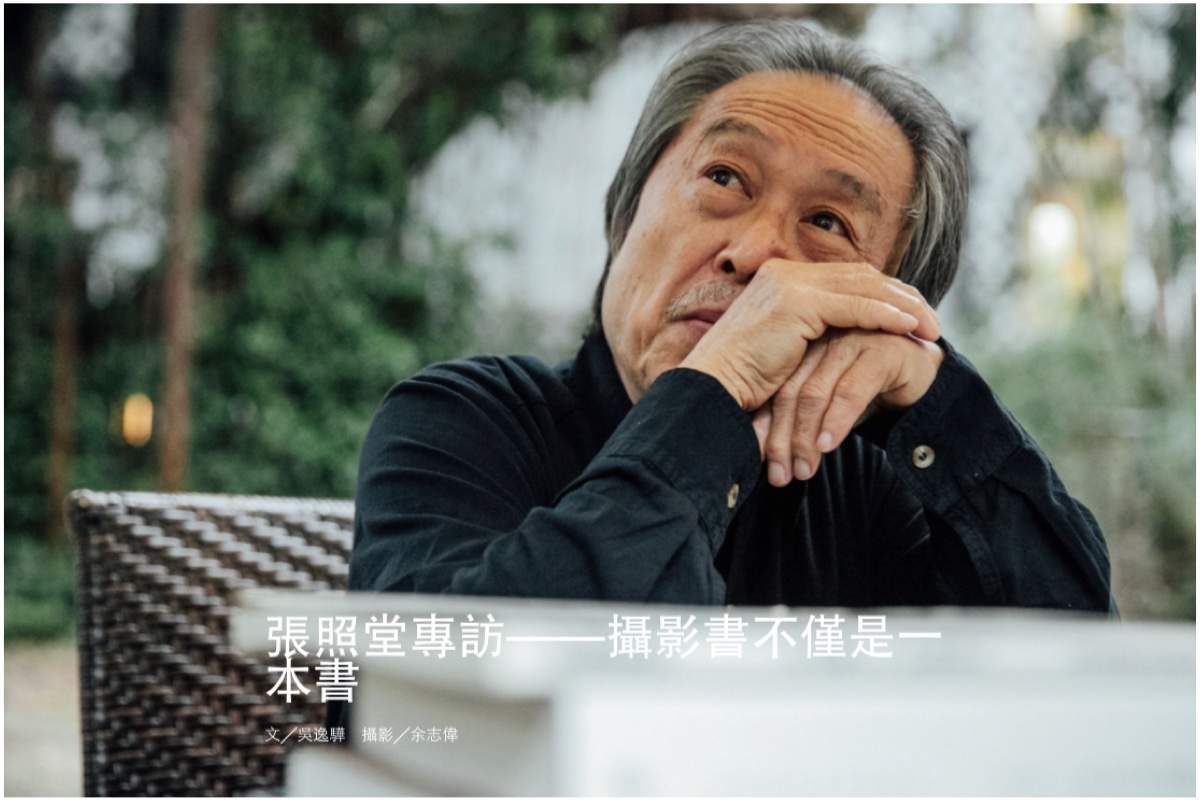
Interview by Wu Yi Hua with Chang Chao-Tang 張照堂 was first published by 報導者 The Reporter.
The following interview by Wu Yi Hua with Taiwan master photographer and curator Chang Chao-Tang 張照堂 was first published by 報導者 The Reporter in Chinese. Republished here with permission and kindly translated to English by Catherine Tan & Valence Sim. Accompanying photographs by Yu Zhi Wei.
“A Photobook is more than just a book”
Q: Teacher, how do you look at a group of photography works? How do you understand different styles of reading?
A: In general, there are 3 ways to look at the works. Firstly, there is viewing at an exhibition hall which you can study those pictures carefully. If the venue is quiet, you can even view each picture at your leisure, carefully studying every picture’s subtle layer, detail, texture/quality. Using music as an example, this would be akin to listening to a concert because there is direct impact and feelings (of being touched) from actually being there.
The second is to read photo books. This is different from exhibitions. In an exhibition hall, you are surrounded by that space, you are embraced by that atmosphere. When you are reading a book, you own the physical book. With it, you can read anytime; slowly, quickly, from front to back, over and over again and break down its editing style. You can have more time to mull over it and compare. However, if one were to compare a printed product with actual photos, it is hard to feel the photographer’s air, feelings or aura. This is like buying a music record home. It is different from what you would experience at a live performance.
The other type is to view on the Internet. Due to the characteristics of the medium, it is fast, light and portable. Through the screen, images are luminated with light so images create a 3D illusion more easily and the colours are much stronger. But it is a phase. Images do not leave strong impressions easily after viewing. If one really wants to read and study photography work, I feel printed media is more convenient and suitable because you can read it anytime, concentrate on it, think over it, think over its background, setup, structure as well as the relationships between elements from start to twists to end, on how it impacts the narrative. Compared to other formats, reading photobooks is more beneficial.
Q: Teacher, what suggestions do you have with regard to reading a photography work?
A: First, you have to accumulate and grow in knowledge. Read widely, absorb different types of artistic works and stay concerned with trends of current times and society. With this foundation, you’ll naturally have greater understanding of its message and beauty when you approach different types of artistic work. You cannot be just a piece of blank paper or lack preparation.
Of course, each creator’s personality and style is different. We need to try and view the work with broader horizons/with open mind and empathy, which we will then be able to enter into a clearer emotional connection with the photographer, and be moved by the works. Being overly stubborn with one’s own narrow minded and myopic preferences will inevitably result in many missed opportunities for more wondrous viewing experiences.
Q: Teacher, can you tell us about what you consider as an editor when you are editing photography works? For example, 921 was a major incident to Taiwan. What do you think? What were your thoughts when you were editing 《Seeing Homeland Again: A Journey through 921 Photo Report/家園重見:走過921影像報告》 (published in 2000)?
A: This was an invitation from Taiwan Media Watch to do a retrospective photography collection of the year. Liu Zheng Xiang /Liu Chen Hsiang got me to plan this together. At that time, many photographers were also around, the works were very varied and there were quite a few photobooks published at that time too.
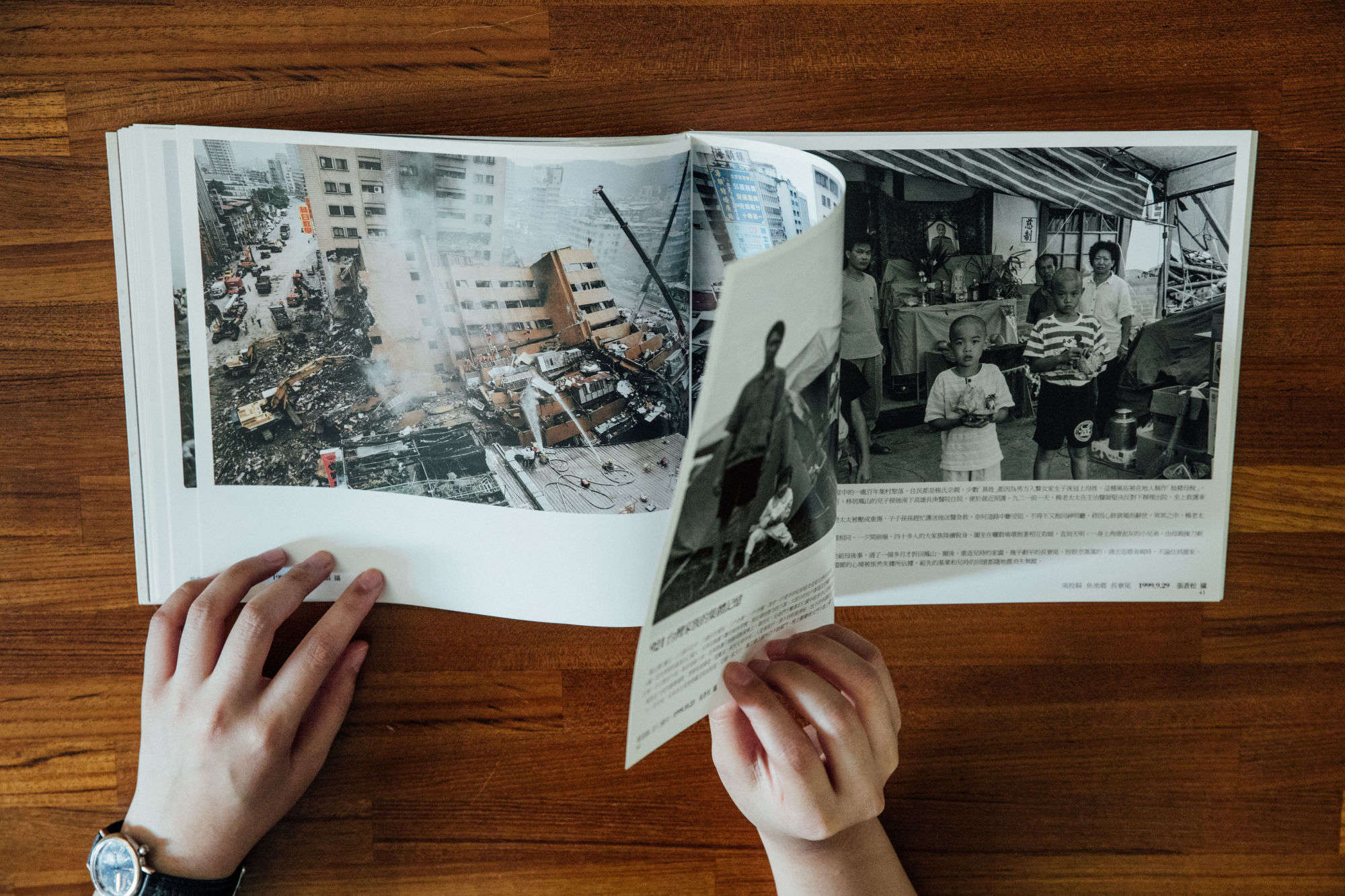
家園重建走過921影像報告。(攝影/余志偉)
We didn’t want to do the same thing so we carefully selected a few close friends and invited them to show 921 through different approaches and angles such as reportage (Liang Zhen Ju, Li Wen Ji, Huang Zi Ming, Hou Cong Hui, Jin Cheng Cai), mental imagery (Yan Xin Zhu, Liu Zheng Xiang), experimental (Wu Cong Wei), archives (Shen Zhao Liang), investigative reports (Zhang Cang Song, 、Xu Bo Xing) as well as organizing and designing some contrasting images (Lin Xi Ming, Hang Da Peng) to bring out the changes and differences in a disaster area. Finally, the book was edited into chapters according to theme, incident, photographic atmosphere and styles.
We encouraged the locals to shoot and asked them to contribute their pictures to the ending of the book. We tried to approach the topic through different angles. Besides showing the perspective of a photographer, we also wanted to convey how disaster victims view their hometown. This photobook is similar to 《To Have Seen The River/看見淡水河》(published in 1993)、《To Have Seen Natives/看見原鄉人》(published in 1997). It was pre-planned and designed over a longer period of time, and not just a selection of pictures after an incident hence we can have an overview of the topic and make up for many areas.
Q: This was a book made up of works from different photographers. Some books consist only of works from one person. For example, Hsu Tsun Hsu’s 《The Party is Over/派對走掉》 (published in 2015). The book has both colour as well as black and white images. How did you decide on the final work as an editor faced with such differences in the work?
A: Editing a solo work is not the same as collective work because collective work has many images of different styles and tones so you have to tear everything apart and put it together again.
Editing a photobook is like a musician writing a song or filming a movie/documentary. It has rhythms – the ups and downs, climax and low point. It may be a slow build up initially, then the first theme may emerge followed by development, more changes and a short rest before the formation of the second theme, till it slowly builds up and reaches climax before quieting down again. We go back and forth like this repeatedly for many times. Basically, it has to have a structure and rhythm.
At the same time, one has to consider many elements such as colour tones. Every transition and individual chapter has to maintain a certain kind of balance so that the tones will not jump when the work is read.
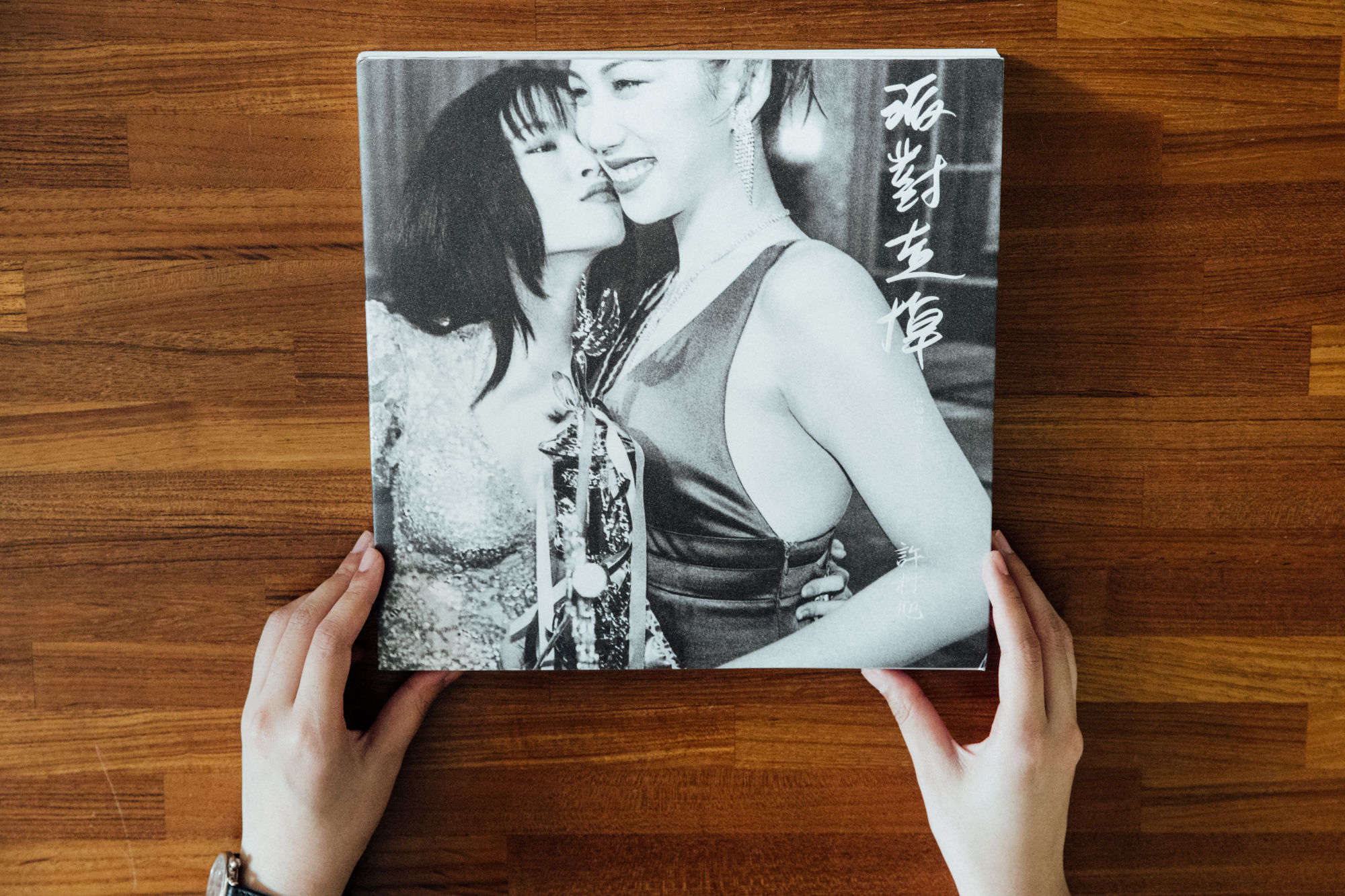
派對走掉。(攝影/余志偉)
Of course, the tone of the images is even more important. This may include different emotional states, conditions, speed, light and darkness, colour series, style etc. Thus it is not advisable to pit a picture with a soft atmosphere against a strong one. It will be too much. To put a frivolous one next to it is not compatible as well. The sequencing also has to abide by a certain order. It is not advisable to jumble present time, time and space sporadically.
There is also structure, angle, direction, proportions and so on to be considered in sequencing. The more images you have, the more choices you have. It is just like you have more to edit when you film more. There is more flexibility for change. Without sufficient material, there will be limits and it will affect the whole product.
In editing books, we frequently lay out the images all over the floor then one person may spend a few days picking and arranging them. There are even times when the edit is ready to go to print the next day but we suddenly feel something is amiss and need to change it quickly. There are also times when we feel another style of editing might produce more flavour after a book is published.
In conclusion, editing is full of different types of organic changes.
Q: Teacher has edited many books. If there is a photographer that you are not familiar with, do you first understand the person or…?
A:If I don’t know (the person)? I probably would not help the person to edit. *laughs*
People who ask me to edit are likely people I am familiar with. If I do not know them well, I will probably say “Sorry!”, unless the person’s work is unique and astonishing, then I might be tempted.
The premise of editing is you admire a person’s work. If you do not like or have any feelings towards a person’s work, please ask him/her to go to someone else even if you know the person well.
Nurturing editing is similar to nurturing photography. As you grow and gain experience, your accumulated knowledge will help you in choosing pictures and making edits. An editor’s preferences and resume should not only be just in photography. It should encompass other things such as literature, art, music, movies and so on, because this will affect one’s concept of editing.
Q: What is the most difficult book you have ever edited?
A: *laughs* Every book is difficult to edit. Recently, Shen Zhao Liang wanted to edit his new book 《Taiwan Variety Circle/台灣綜藝團》. This book was very hard to edit. He had taken a lot of shots with different subjects, incidents and situations. We had laid the images out so many times, arranged and rearranged repeatedly and added images. He had shot so many different things with quite a lot of changes within. It wasn’t easy to make sense of. It was quite a headache.

沈昭良未出版的新書《台灣綜藝團》(照片/沈昭良提供)
Sometimes making a smooth connection throughout a documentary work can be difficult even if you have sufficient material but lack elements to slow things down, contrast and create transitions.
Not every picture in a photobook or series needs to be exciting and captivating. In editing, this may cause images to fight and cancel out each other’s impact and strength because of excessive tension. There must be pauses, space and room for imagination in between.
Good photographers not only notice the main areas or key photos, but also pay attention to surrounding details and setups. One has to be alert to any instantaneous changes but also be able to quieten down to capture easily neglected corners.
Hence, don’t be too one sided with regard to structure, angle, movement and silence, control over space and atmosphere. Try to think of ways to explore from different levels. Be versatile. It is more exciting to edit photos taken with such professional attitude.
Q: Teacher has not answered which book is difficult to edit. Are there others besides 《Taiwan Variety Circle/台灣綜藝團》?
A:Xu Cun Xu/Hsu Tsun Hsu’s 《派對走掉 The Party is Over》 was not easy to edit as well because it was too complex. Initially, most of the pictures he brought me were inclined towards news reportage pictures of scenes from street clashes after the curfew.
Even though he was sensitive and skilled in satire, I told him this was not enough. It will only become a photographer’s retrospective collection. I felt an excellent photographer can’t only do news reportage images and should have other works.
After he asked for my help to edit, I kept asking him to go back and dig for more images. He continued to find things I wanted. When I was editing this book, the chapters at the start and end did not focus on politics or street protests, but of ordinary people and their existence. There were the innocent ones, the helpless ones,the lost ones⋯⋯That has a much greater reach and a greater representation of society as well as more photographic value.
To focus on politics is too narrow for a photographer. Photography should be more concerned about a wider spectrum of human nature.
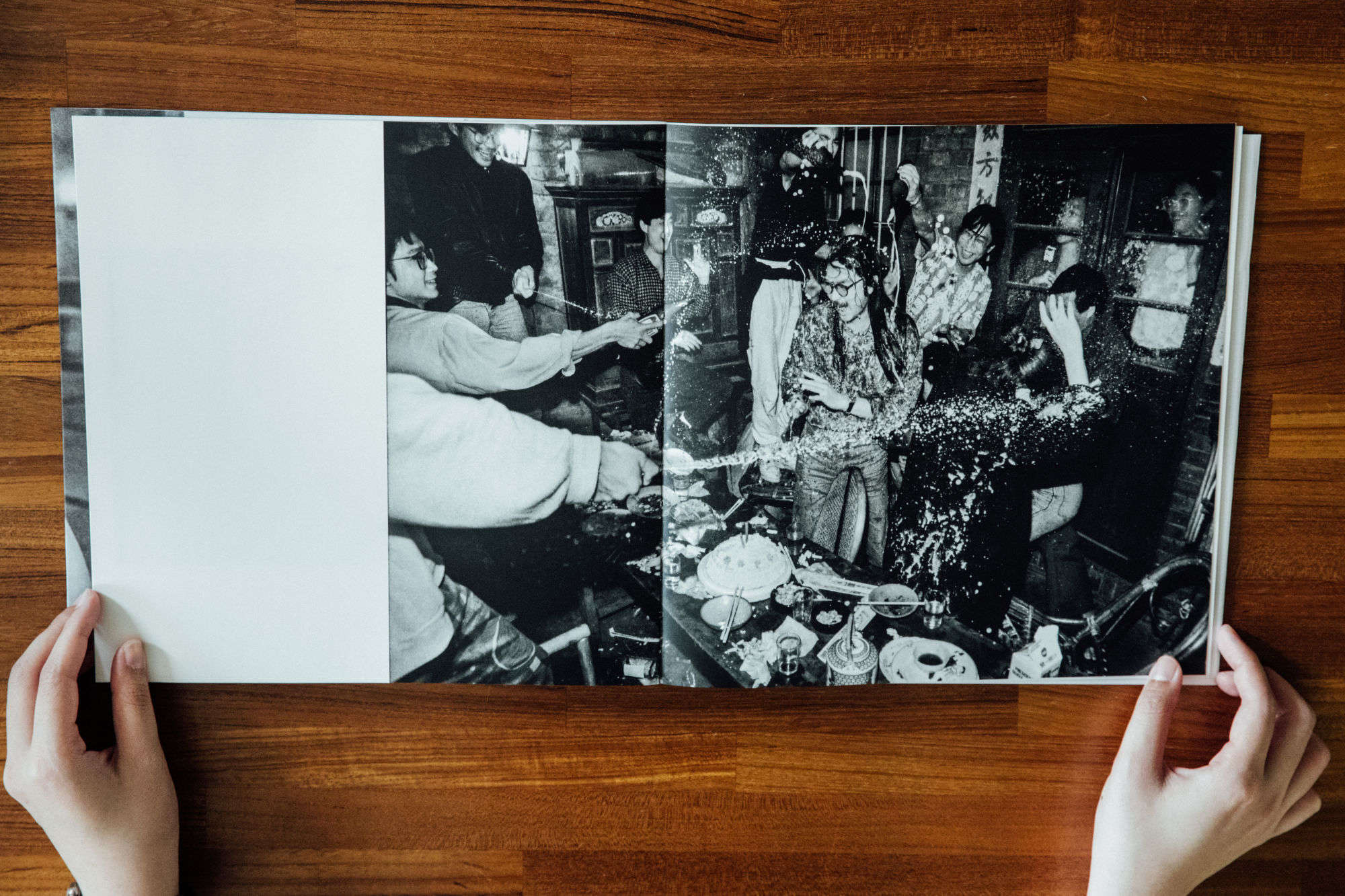
派對走掉。(攝影/余志偉)
Q: From my understanding, Hsu’s book had images that were taken in colour but the book was printed in black and white. This seems to be teacher’s suggestion? But 《Seeing Homeland Again: A Journey through 921 Photo Report/家園重見:走過921影像報告》 had both colour and black and white?
A: “The Party is Over” can’t be in colour because the fundamental tone of the book is black and white. It is stronger and more direct. He did not have a lot of images in colour and they were weak so I might as well express the whole work in black and white.
《Seeing Homeland Again/家園重見》 is a different book. That book involved the participation of many people. Most of them shot in colour, and color images have a greater sense of realism for disaster scenes. Its realism is more impactful and persuasive to the readers, so a mix between colour and black and white was used.
Q: Having both colour and black and white seems to be a challenge for publishers?
A: Actually colour is easy to print; black and white is harder. There will not be major differences if colors were used because it’s CYMK. However, black and white photos are harder for publishers.
Colour differences often occur when using CYMK to print black and white because of differences in the tonality of the colors, hence it’s harder to adjust. This goes the same if we were to do the same even for black and white, if we do not make accurate adjustments to the colors. If a photobook has both colour and monochrome images, the editor must really think through the layout carefully to reduce printing costs yet maintaining the quality of the body of work.
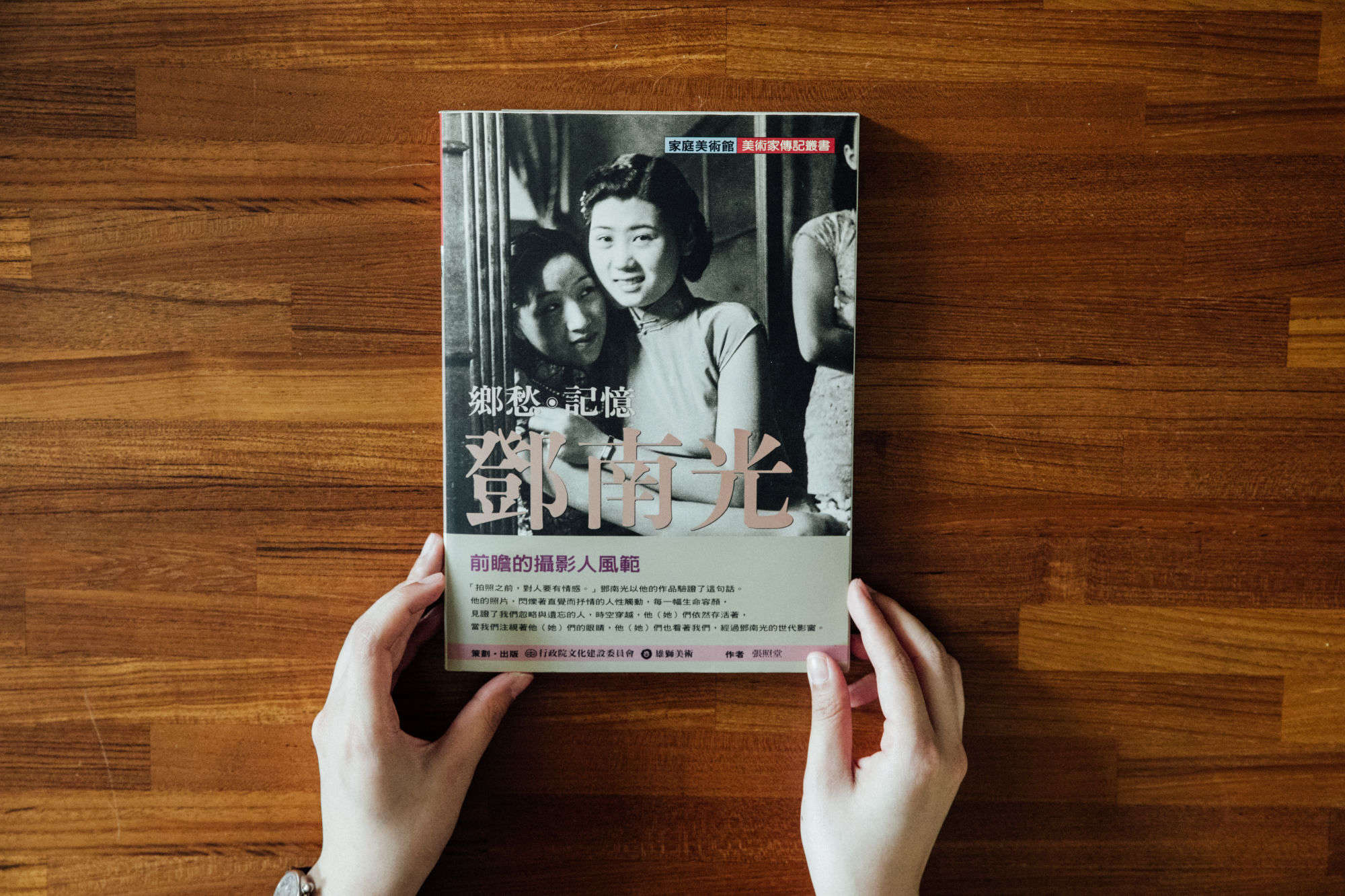
鄉愁記憶鄧南光。(攝影/余志偉)
Q:Can you give one or several examples of books you felt was/were well edited?
A: I felt 《Homesickness. Memory: Deng Nan Guang/鄉愁.記憶:鄧南光》(published in 2002) was one of the better ones. This book took me a long time to organise because the book spans 6 sections including childhood memories, japanese photography, current news, social landscape, movie era, images of daily life etc. It developed according to timeline, space changes and was accompanied by high quality images.
Deng Nan Guang had published quite a few photobooks but in this book, it was well organised, quality and quantity were well taken of and photos and editing were exciting – elegant coupled with detailed reference material. It did take quite a lot of energy to edit.
Q: How did the chance to edit this book come about?
A: In 1992, the Council for Cultural Affairs had a plan for 《Family Gallery – Artists’ Biography Series/家庭美術館-美術家傳記叢書》 to be carried out by Lion Art. In the beginning, it introduced mainly painters but after a while, photographers were included. The first candidate was Deng Nan Guang. After that, there was Zhang Cai and Li Ming Diao of The Three Musketers and of course, Lang Jing Shan was included as well.
At that time, Li Xian Wen asked if I could help but actually, I had already helped Deng Nan Guang edit photos several times before in works such as 《Aspects and Visions/臺灣攝影家群象》 Series 1 in 1989,,《 To Have Seen The River/看見淡 水河》in 1993,《To Have Seen Natives/看見原鄉人》in 1997、《Woman. Taipei/女人‧臺北》in 1997,《Old. Taipei. Person/老‧臺北‧人》in 1998 and so on. On top of that, there were also documentary interviews that included many past stories from his family. We were provided equipment, artifacts, books, negatives, contact sheets etc. These were turned into essays step by step along with editing of photos. It took one year to complete it.
Q: Was “The Three Musketeers” your idea?
A: Of course not! In 1948, Shin Sheng Daily News organized a photography competition in Tamsui Shalun. Many photographers participated. In the end, Zhang Cai won first prize, Deng Nan Guang and Li Ming Diao shared the second prize. The three of them won the top three prizes. A younger photographer Huang Ze Xiu/ Huang Tse-Hsiu coined the term “The Three Musketers” after that.
Eventually, the three of them opened photography equipment stores in Taipei Central and provided scholarships as well as research support to young people through the setting up of institutes. They promoted photography passionately. “The Three Musketeers” continued to be passed down after that.
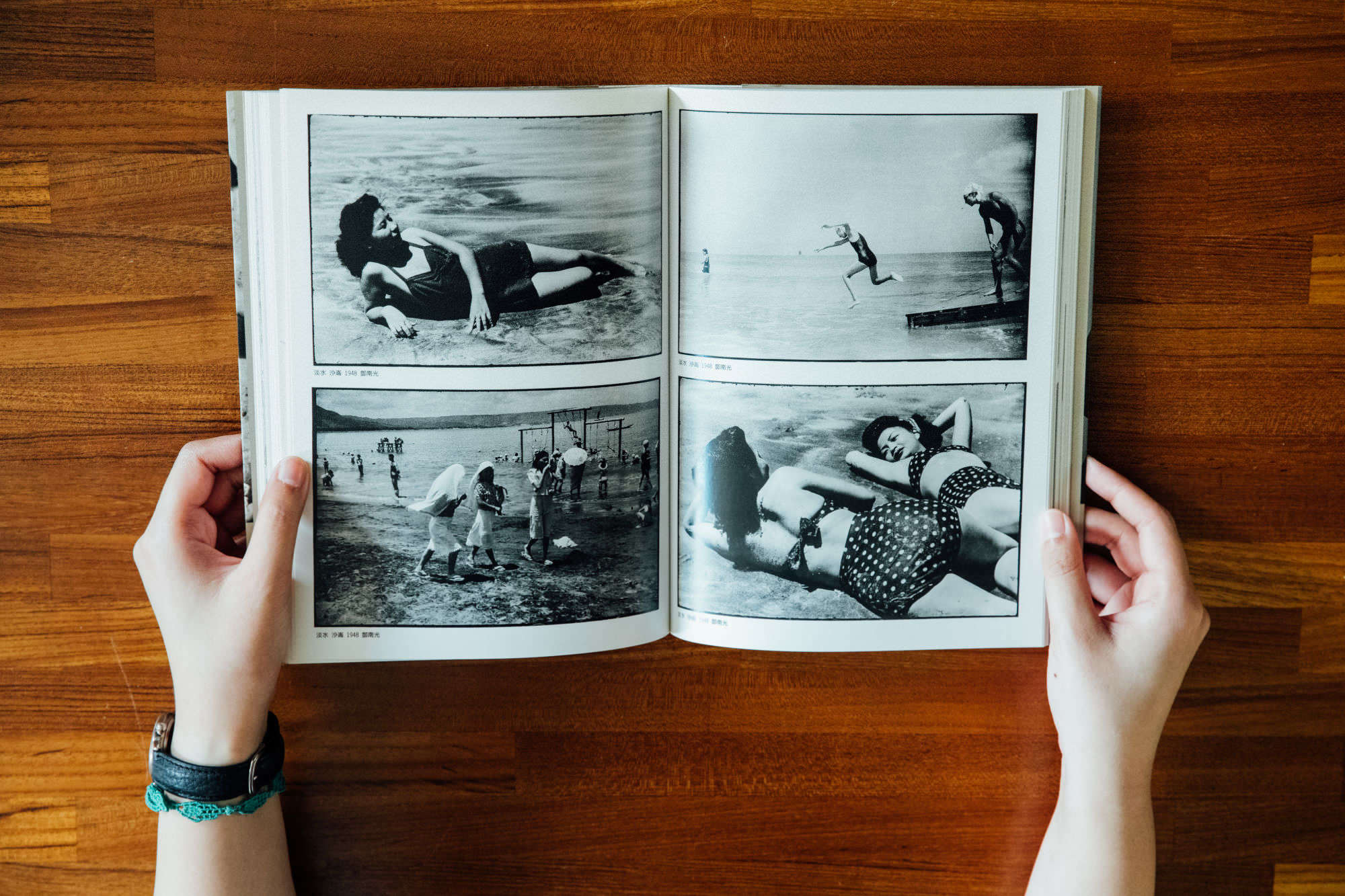
鄉愁記憶鄧南光。(攝影/余志偉)
Q: But teacher, how do you think after you have edited so many books? As one ages, one’s thinking will change and have different thinking at different age. How do you see your process of change from young till now?
A: This is hard to say clearly. You always adjust your thinking and ways according to your age and growth experiences.
When one is younger, one tends to be more aggressive and reckless. As one grows older, one can’t help but mellow a little and become gentler. The advantage of age is maturity and calmness. The downside is indecisiveness and excessive worry. One is no longer as straightforward and energetic. We can only constantly remain alert and warn ourselves to continue to absorb (new things), renew ourselves, learn different things and continue to hard work to push forward.
Share
